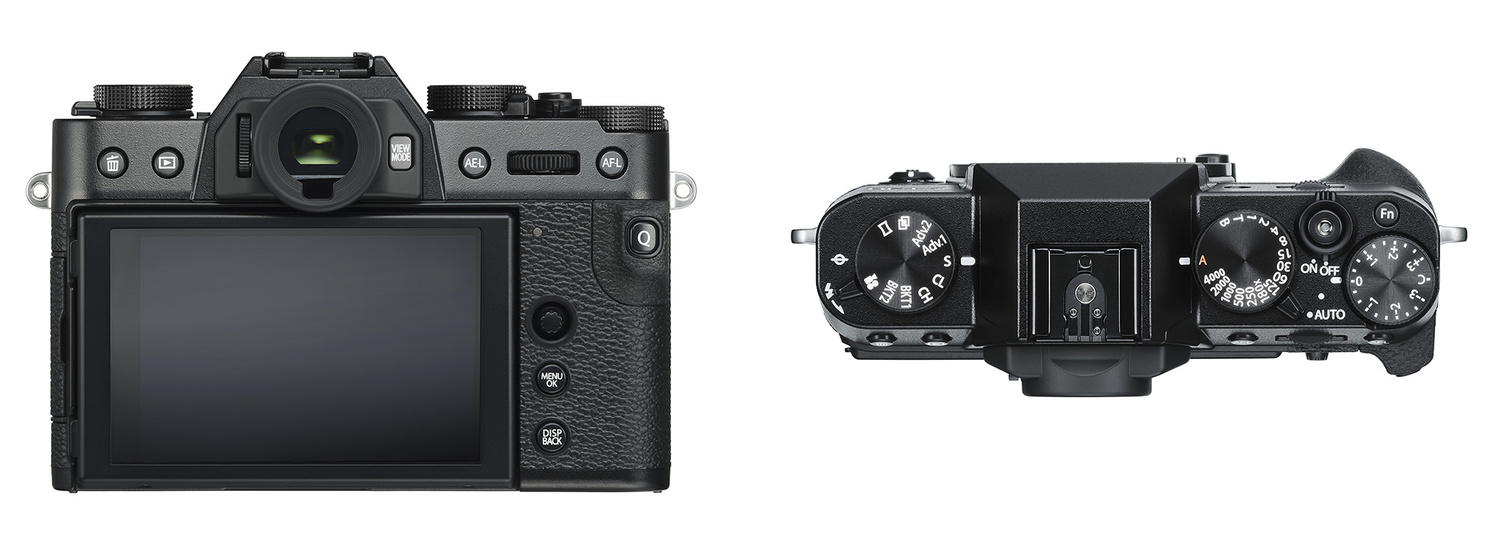They say the third time’s the charm, and that’s certainly the case with Fujifilm’s new X-T30. I got a chance to take a hands-on look at a pre-production X-T30 and put it through its paces recently. How did it do?
As some background, I’ve been an X-series user for the past few years with an X100T and later an X-T1. I’ve been a big fan of the X-T1 for journalism as a second camera to a DSLR or a primary camera for certain events. I also carry it along to weddings for the gorgeous color and sharp Fuji lenses, such as the 56mm f/1.2 R. The X-T30 is technically two generations newer than the X-T1, though it sits below the single digit T-series model (X-T3) in the lineup. That said, my X-T1 has always been the bridesmaid and never the bride in my shoots, always being a second camera to my battle-tested full-frame DSLRs.
The X-T30 shattered that perception. Fujifilm packed a formidable APS-C camera into a tiny package here that retails for under $1000. That puts it squarely head-to-head against the likes of full-frame mirrorless cameras such as the EOS RP and the long-in-the-tooth Sony Alpha a7 II, and I would argue that it’s a better buy than both of those, sensor size be damned.
The Fujifilm X-T30 borrows heavily from its higher-end stablemate, the X-T3, and that’s no bad thing. Starting with the specs, here are the highlight features of the Fujifilm X-T30:
- 26.1 MP BSI APS-C X-Trans CMOS 4 image sensor
- Quad-core X-Processor CPU (that helps to drive face detection and Eye-Detection AF)
- AF sensitive down to -3EV (think a landscape lit by moonlight)
- 4K video at 30 fps, or Full HD video at 120 fps
- Tilting (though not swiveling) screen with touch capability
Beautiful Body
Starting with the body, it’s a small but solid package. There’s a lot of metal in the construction, and the color choices (black, charcoal or silver) look great. Dials have a robust feel to them, and the clicking control wheels are a nice touch to add some extra customization options to the whole package.
Those extra control points are definitely necessary because the back of the camera is a bit sparse. Where as the X-T3 festooned with a four-way d-pad and a AF lever out back, the little brother of that camera here drops the d-pad and leaves us with the AF lever. This is a departure from the previous generation, the X-T20, which didn’t have the AF lever (but had the d-pad), but with the smaller form-factor, this design makes sense. I initially missed the ISO dial that sits atop the single digit X-series bodies, but changing it with a dial isn’t difficult, it just required some muscle memory reconfiguration.
What the camera loses in buttons, it gains in a thinner screen with enhanced touch functionality. Setting major autofocus functions was a breeze with the responsive touchscreen, though for old school folks who dislike touchscreens, the AF lever accomplished the same things just as quickly. I personally found my nose activating the touchscreen more often than not, so I’d disable the autofocus point selection and end up mostly using it for reviewing photos and checking focus, which was easy to do with a smartphone-like pinch-zoom gesture. The high resolution (1.04M dots, same as the X-T3) of the rear LCD screen makes it easy to judge accurate focus and color as well. In using the viewfinder side-by-side with the X-T3, while on paper it gives up some resolution to the higher model (2.36M dots vs. 3.69M), in actual usage it’s not noticeable. In fact, my colleague who has been a longtime X-T3 user and I didn’t realize there was a difference in using both cameras until I looked up the specifications after the fact.
There’s only one card slot, but at this price point, that’s not unexpected. There is a microphone input and USB charging, which opens up some extra options and lets you ditch the brick-like chargers and converters while traveling. The USB-C port opens up the possibility for using headphones to monitor audio as well, which is a nice touch.
There are a couple of situations where the body style may come up short, and this comes down to personal preference and intended usage. The X-T30 doesn’t have weather sealing, and so in inclement conditions, an X-T3 or X-H1 would be a better choice, as they would also be if you have larger hands. The diminutive X-T30 can feel a bit small at times, though that’s a quality I appreciated as I’m always on the lookout for lighter cameras that don’t give up image quality. One advantage over the higher models is the built-in flash, which can be useful for triggering other flashes or as a fill light in a pinch.
Paired with some of the company's smaller primes, such as the Fujinon XF35mmF2 R WR or the new Fujinon XF16mmF2.8 R WR Lens, the balance of the camera in the hand is perfect, though larger lenses such as the Fujinon XF90mmF2 R LM WR can get a little front heavy.
Image Quality
I’ve never been unhappy with the quality out of any Fujifilm camera. They’ve always had pleasant colors, reasonable detail and sharpness, and good low-light performance for the price.
But if you haven’t used this current generation of Fuji sensors, then prepare to be wowed. The one in the X-T30 is a wholly different animal than the 16-megapixel X-trans sensor of yesteryear. The amount of detail I was able to get out of even this pre-production model is insane. Here’s a shot of a building on Syracuse University’s campus that shows excellent detail and highlight/shadow retention, even when shot through a window from an adjacent building:
I even put the camera side-by-side with a full-frame Nikon D750 with the exact same lighting setup for a portrait shoot of my daughter (2 Nikon SB-700s triggered on SU-4 mode with an additional SB-700 on top of each camera at 1/128 power, with the ISO adjusted to compensate for the differing flash synch speeds). Again, even though this is a pre-production camera, the detail out of this camera compares favorably to a camera with a much larger sensor, to say nothing out of the very nice color profiles (Astia, in this case) available on the Fuji:
At 100%, the cameras are indistinguishable from each other. The Fujifilm’s Eye-Detection AF made shooting this portrait even easier than the already easy D750. Take a look:

A look at the Fujifilm X-T30 and the Nikon D750 images at 100%. The detail out of the smaller-sensor Fuji compares easily with the D750 and the Eye-Detection AF made focusing for this kind of image much easier. The Fujifilm image is from a pre-production X-T30.
That’s crazy coming from a mid-range APS-C camera against a well-regarded full-frame DSLR. In photojournalistic use, I cranked the ISO up to 1600 or 3200 and kept shooting without any real image quality penalty.
The camera shoots 4K video, which looked reasonably detailed on a quick inspection, but as this was a pre-production model, I wasn’t able to truly gauge autofocus or audio performance. The inclusion of this feature at this price point is notable, as at least one large camera manufacturer still isn’t putting 4K video into sub-$1000 cameras. Here, you get both DCI and UHD options, which is a thoughtful inclusion.
Speed Demon
I’ve always been an advocate of DSLRs because of the speed advantage, whether it comes to autofocus or just performance in general. That doesn’t really hold true anymore. I didn’t really notice it until I used the X-T30 side by side with the old X-T1 and the Nikon D750. The upper echelons of Nikon and Canon DSLRs have always been the benchmark for performance and usability, but the X-T30 is right there with them in terms of raw speed in every aspect of operation. If we’re splitting hairs, the mechanical shutter can even go faster than the D750, at 8 frames per second vs. 6.5. Shutter lag feels non-existent.
Even in this pre-production body, autofocus was as quick as anything from a high-end DSLR, which makes sense, as this is the same system that’s in the top-shelf X-T3 with some improvements (that will soon be in the X-T3 with a firmware update). With this mirrorless implementation, you get the aforementioned bonus of face detection and even eye detection compared to a DSLR. The latter features tracked a face and eye well when there was only one, but tended to get confused with multiple faces, where I turned it off. Again, as this was a pre-production model, this behavior could change. Either way, when shooting portraits with a single person, the Eye-Detection AF was a welcome addition:

Eye-Detection AF in the Fujifilm X-T30 worked well with single subjects, such as in this portrait situation, but did get a little confused with groups. This image was shot with a pre-production Fujifilm X-T30.
But there’s the other part of the speed equation that I didn’t notice until I sent the camera back to Fujifilm and went back to my old X-T1. Even in normal operation, whether it’s maneuvering through the menus or picking an autofocus point, everything felt turbocharged. This isn’t an exaggeration. You won’t ever wait for the camera to move a focus point or adjust a menu item. On the older X-T1, the menus take their time with some animation and there’s even a slight delay to moving an autofocus point or taking an image, though it’s something I never noticed before until using the X-T30.
I once described using mirrorless models to take pictures as a “deliberate act” and based on previous generations of Fujifilm and more recent Canon EOS M models, that still held true. But that’s not the case anymore. This generation of of Fujifilm cameras, including this X-T30, changes the game. I wouldn’t hesitate using this as my main camera for any shoot.
A Comparative Bargain
Literally a week before this camera showed up at my door, I wrote that I couldn’t quit full-frame DSLRs. Based on a price/performance ratio, much of that held true at the time. At $900, I can’t wrap my head around how Fujifilm was able to throw just about everything and the kitchen sink into this camera. My initial impression, given the size and controls, was that this would make an excellent second camera, but after a couple of weeks in hand, that’s just not true. At this price point, coupled with generally better-priced (compared to their DSLR counterparts) Fuji lenses, this makes a compelling case to be a primary camera for most audiences. Certainly I can say that this isn’t a b-cam for journalism anymore, as I previously wrote. It can easily fill the role of a main camera. I covered Onondaga County's state of the county address and didn't even bring a DSLR, which was a first for me in a journalistic photo shoot (well, to be fair, I had it in the trunk of my car as a backup just in case, but I never took it out).

I shot this event with a Fuji X-T1 and a Fujifilm X-T30 side by side, and it's safe to say the speed improvements and better ISO performance are a welcome addition for journalists. Image shot with a pre-production Fuji X-T30.
I frequently laud my Nikon D750 as the best camera for the money, but that camera, released in 2014, still comes in at almost $400 over this camera. It’s a great camera, but you give up 4K video, enhanced autofocus features, a touch screen and a smaller body all for that full-frame sensor. Even APS-C DSLR contemporaries, such as the Canon 7D Mark II come in at $500 more than this body, and you give up a lot of image quality going that route. You just get more for less with the X-T30.
The Fuji makes a compelling case. Initial impressions are that it appears to be a thoroughly modern implementation of an APS-C mirrorless camera that can run circles around the competition.
This isn’t a full review of the camera by any means, as much of the camera was still being sorted out in this pre-production model, but Fuji certainly looks ready to put other manufacturers on notice here.
What I Liked
- Even in this pre-production model, image quality and autofocus are excellent.
- Solid construction and quality feel.
- Deep feature set at this price point.
- Speedy in just about every aspect.
What I didn't Like
- Body might be too small for large hands.
- AF Lever a bit small, making it slightly difficult to use.
- I missed the d-pad.
All in all, my experience at this early stage was very positive. What do you think? Is this the best camera under $1000?
Purchase
You can pre-order the X-T30 here in body only, 15-45mm power zoom kit, and 18-55mm kit lens packages.












I must say, that seems like an enormous amount of camera for that price! I've never owned a Fuji but I'd definitely consider this.
I guess you have to ask yourself, do you need just one camera? Becuse this camera is better at photos than a gh5, but not video, also to be fair it’s not as good at photos for some like a 5D4/D850/a7xxx. Heckle all you want, it’s not as capable. As a pro my goal is to own FF (I shoot Canon with TSE lenses) and to have a capable video camera for the odd video job. I can use a gh5 with a speed booster and all my canon lenses so that works me.
If it was shooting for fun, I would just go with my favorite cameras, the x100t and my iPhone.
This camera seems like a great value at 900$ if your needs fit it is the best price point.
I can't speak to the D850 or the a7xxx, but even as it was in this pre-production state, I would take this over the 5D Mark IV. I owned the 5D4, so I can definitely say that from experience. The file quality is just way better work with, and the color profiles are awesome. Maybe the only ONE situation might be sports shooting, but I haven't had the chance to use this Fuji for sports, so I can't compare (I've shot football and soccer with the 5D4).
1970 called, they want their ergonomics back. Sorry, but the top shutter button is just ridiculous.
I didn't have an issue with it's placement, but that's just my hands?
No grip is a bit of a problem but shutter button is not IMO
I think the most impressive thing is that it inherited the quad-core processor from the X-T3. I honestly wasn't expecting that. It's a pretty amazing value. You essentially are getting an X-T3 in a smaller body with one card slot for $900. I would think that X-T10 and 20 users would be very happy with the update.
weather sealing, for some people, also very important.
True.